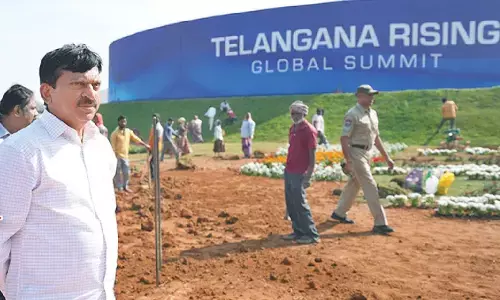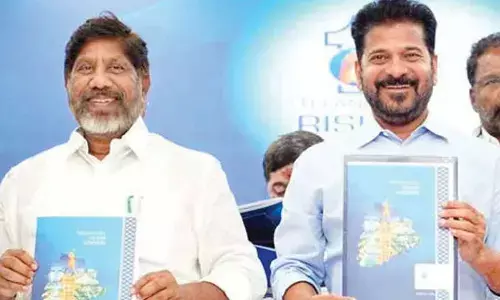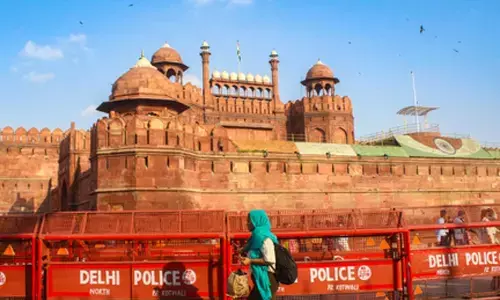Metro rail to connect airport, Amaravati

Vijayawada: In jittery over loss of houses and commercial complexes on a massive scale, the people pitched for change of alignment of the metro rail project at Pandit Nehru bus station and Nidamanuru corridor-2.
Vijayawada: In jittery over loss of houses and commercial complexes on a massive scale, the people pitched for change of alignment of the metro rail project at Pandit Nehru bus station and Nidamanuru corridor-2.
At a meeting convened by Vijayawada Sub-Collector Srujana over peg marking a few days ago, the people on Eluru road through which the metro rail is proposed urged for diversion of the metro rail along the BRTS road.
"The property loss will be mitigated to a large extent if Eluru road is spared from the metro rail", said the people in unison.
Even as people affected by metro rail still optimistic at options of alternative routes covering BRTS (Bus Rapid Transit System) road and Bandar canal bund to save their houses and other structures, the Amaravati Metro Rail Corporation (AMRC) is ahead of them with its plans of connecting the capital city Amaravati with Vijayawada and Guntur. It is keen to extend the metro rail up to airport in future.
A section of people in Vijayawada are hoping that if the metro rail avoids Eluru road and Bandar road, their nests are not razed to give way for the metro rail route.
Instead, the metro rail can pass through BRTS and Bandar canal bund to avoid traffic congestion for years together as witnessed by them in Hyderabad when metro rail construction was going on.
Andavalli Satyanarayana, a retired government employee, who is sentimental about his home, feels the present metro rail route could be changed to help many people like him who would lost their dwellings in the process of laying metro rail on Pandit Nehru Bus Station (PNBS) -Nidamanur corridor at a cost of Rs 969 crore.
He was against the very idea of metro rail. People would suffer owing to traffic snarls. Moreover, for small city like Vijayawada, the metro rail was not viable, he told The Hans India.
Similarly, people of Nidamanuru are opposing the metro rail as they believe that the coach depot would cause groundwater contamination besides air and noise pollution. It was noticed during public hearings in other areas where 25 stations would be coming up, people are not willing to part their properties.
It may be noted that the Delhi Metro Rail Corporation (DMRC) had inked a pact with AMRC to construct metro rail line last August. While a corridor from PNBS to Penamaluru has 12 stations, another from PNBS to Nidamanur will have 13 stations.
A total distance of 13.27 km will be covered by PNBS-Nidamanur corridor whereas the other corridor from PNBS to Penamluru covers a distance of 12 km. Works relating to these corridors will begin in March.
As per the agreement between AMRC and DMRC, works will be completed in four years. The AMRC has a vision on how to expand the approved metro rail corridors. A top official of the AMRC told The Hans India that the rail will soon connect PNBS with Amaravati by covering a distance of 30 km.
Similarly, another 10-km-long line will connect Vijayawada with airport in Gannavaram. In the same manner, a 20-km-long line would be coming up between Amaravati and Guntur, he said.
The official dismissed the idea of changing the existing metro line on Eluru and Bandar roads. It would not be profitable idea to run the train on BRTS road as it would be far from commuter requirements.
If we go on building line on Bandar canal bund where should we arrange stations, he quipped.
Disputing the idea that Vijayawada is too small city for execution of metro rail works, he said that in Bengaluru metro rail started operation with a small distance of eight km.
Same was the case with Jaipur, Chennai and other cities where metro rail operations began with just 10 km lines.


















